Saving the Wild South: The Fight for Native Plants on the Brink of Extinction
Adapted from SAVING THE WILD SOUTH: THE FIGHT FOR NATIVE PLANTS ON THE BRINK OF EXTINCTION. Copyright © 2021 by Georgann Eubanks. Used by permission of the University of North Carolina Press. www.uncpress.org
The deepest dark of winter is not the night sky. It is buried under our feet. In layers of soil both rich and poor across the southeastern United States, the seeds of native species rest dormant in the dark. They have been waiting—some for decades—for the right conditions to push toward the sky. Some plants are rare and endangered. Others are common as grass. Though we tend to believe that the southeastern region has always been heavily forested, it’s simply not true. Once there were prairies here, full of wildflowers come spring and teeming with grasses in summer, where wild animals grazed, and pollinators perpetuated the profusion.
The botanist Dwayne Estes is co-founder of the Southeastern Grasslands Initiative (SGI), headquartered at Austin Peay State University, in Clarksville, Tennessee. In the many talks he gives to help dispel the myth of the early predominance of forests around the region, Estes describes the ancient grasslands of the Southeast, their intense biodiversity, and how many rare plant species we are now on the brink of losing because so much land has been given over to forests.
As part of my research for a book about endangered plants in the South, photographer Donna Campbell and I met up with Estes to visit a prime example of a restored grassland at the eighty-two-thousand-acre Catoosa Wildlife Management Area that stretches across Tennessee’s Morgan and Cumberland counties along the border with Kentucky.
Estes’s Tennessee twang flavors his speech, even when he reels off the Latin names of every plant he encounters in the field. He drives a black Toyota pickup truck with a camper top, and when he resorts to a coat and tie for the more formal presentations that he gives at garden clubs and academic conferences, he is not exactly in his element. Estes is six foot three with curly black hair and a neatly trimmed beard. Though he serves as professor of biology, director of the Austin Peay Herbarium, and principal investigator for the university’s Center of Excellence for Field Biology, he has not a shred of academic pretension. His humility is earnest and his passion for the natural world is infectious.
“I suppose I might have learned about grasslands if I had been a student in some classroom in Kansas or South Dakota, but I was not,” Estes told us as we drove toward the preserve. “I was born and raised in southern middle Tennessee, in an area near the Alabama line. And what most people raised in the South in the last hundred years simply never learned is that grasslands, meadows, longleaf pine savannahs, dry prairies, grassy balds, and open wetlands were all a part of the landscape of the region long before the camera was invented.” Restoring these biodiverse remnants is an urgent task, Estes said. In another twenty-five years, it will be too late.
Tennessee’s Cumberland Plateau was a hunting ground for Cherokee, Chickasaw, Choctaw, and Shawnee peoples who practiced grasslands management through the use of fire. They also encouraged grazing among bison, deer, and elk to control the foliage. When the native people were forced off the land in the eighteenth century, the colonization of pine and oak in the grasslands began, steady and sure as the colonization of the English, Scots-Irish, and Germans. A succession of hardwoods, woody shrubs, and conifers began closing in. Habitat destruction and the conversion of meadows to agriculture escalated the losses in the entire southeast region. Later, prevention of natural flooding created by multiple river impoundments added to the transformation.
Though the pervasive existence of grasslands was blotted out of our collective memory by the forests that replaced them, many of the species that occupied the landscape are still with us, albeit as buried treasure. It is this dark trove of native plants in seed banks underground that Estes is constantly explaining to philanthropists, corporations, and the public to encourage restoration. And lest we think we know all the plants that are lying dormant under the topsoil, SGI’s chief botanist, Alan Weakley, of the University of North Carolina, is also working to bring attention to more than seventy-five southeastern grassland plant species recently discovered that have survived but are so new to science they have yet to be named.
Timber and mining interests moved into the upper Cumberland in the 1870s. Big companies harvested the trees and mined the coal and then sold off the cleared land to small farmers. When the Depression hit, timber and coal interests pulled out. Gradually this land was acquired in parcels by Tennessee and given over to the state wildlife management agency to be used for public hunting, fishing, and recreation.
“Wealthy folks back in the day retreated to the Cumberland Plateau,” Estes said, as we bumped along the several miles of gravel in the refuge. “The altitude and the forested landscape keep the temperature down. People in the twentieth century came up here for cool air in the heat of summers, and many still think the forests are what should be here. The plateau has long been promoted as a forested landscape, and it has continued getting denser and thicker. By the 1980s so much of the plateau was forested or given over to pine plantations that species needing an open landscape really took a nosedive,” Estes said. “One of the main casualties in the 1980s was the red-cockaded woodpecker.” The last woodpecker specimens from Catoosa were taken to Fort Benning, Georgia, in 1990.
Estes steered us up and over a rise, and at the crest, the view opened up. The area ahead had been burned on both sides of the gravel road and the trees thinned out. We had arrived at a thousand-acre grassland restoration that had begun as a timber salvage operation. “The southern pine beetle was coming this way, and local foresters knew it would ravage this area that was then choked up with old growth hardwoods and pines,” Estes explained. “The Tennessee Wildlife Management Agency decided to clear the valuable timber—tens of thousands of board feet of old growth pine—before the pine beetles got to them.”
“There are a lot of places in the Coastal Plain of the South that you could go to now and you would never know there were pine savannahs there at one time,” Estes continued. “They were either logged out or converted to other land uses. The same is true here. There are many academicians now who question whether the shortleaf pine was ever a major component of the Cumberland Plateau. I would suggest that people have forgotten to look at the historical record.”
Estes and some of his colleagues have gone beyond scientific journals and naturalist narratives to study real estate plat maps, genealogical records, government documents, old newspapers, and other archival materials to find evidence of the previous existence of grasslands, wildflowers, and certain tree species in Tennessee.
“The historical record shows that shortleaf pine had been abundant up here. It supported a whole industry and many livelihoods. In some places today, however, shortleaf is so rare you’d almost think its absence was purposeful—that people were trying to get rid of it. But it’s making a natural comeback here, all on its own.”
We stopped and got out of the vehicle as Estes pointed to a grand specimen—a forty-year-old shortleaf pine. This comeback at Catoosa has been so impressive that some officials from other agencies involved in conservation suspected that it was manmade: that the native plants were seeded in rather than the product of a natural process. But it was the buried grassland seedbank that was freed when the trees were cut, and the landscape was burned.
“I wish we had the capability to reseed with these results!” Estes said, his voice rising. “This restoration should be a model for hundreds of thousands of acres in the South. Three hundred species of plants returned, including rare species that have come back.” He stopped. And as if on cue, a bobwhite quail called from the brush beyond the shortleaf pine that Estes was leaning against.
The call of a bobwhite—first with a short note and then a longer lilting note—comes out as two quick syllables, as if the bird is calling its name “bob white,” or sometimes “bob bob white.”
It was the first bird call I learned as a child. My Georgia grandfather, who taught me to tell time and to whistle before I was in kindergarten, also acquainted me with the songs of the birds in his yard. These days, where I live, it is rare to hear a bobwhite quail. The grasslands and the shortleaf pine, Estes said, provide an important food source for small mammals and birds, especially northern bobwhite quail (Colinus virginianus). The shortleaf also offers roosting habitat for bats and nesting habitat for woodpeckers. The northern bobwhite and the eastern meadowlark have declined by 75 percent over the past forty years, and some predictions suggest that they will decline by half again in the next ten to twenty-five years.
We listened as the bird called again, then suddenly a bright orange and brown butterfly (Diana fritillary) floated by and lit on a native, black-eyed Susan. As we climbed back in the truck, Estes talked about his vision for the Cumberland Plateau and the need for more restoration. Efforts in Georgia, North Carolina, and South Carolina have created quail plantations and savannah grasslands that support rare and native species.
“I’d like to see more thousand-acre estates like this one returned to grasslands,” he said. “Based on the forensic clues that I look at as an ecologist,” Estes said, “somewhere between 40 to 60 percent of the Cumberland Plateau is flat to rolling and would be eligible for grasslands restoration.”
We drove on, admiring the feathery green grasses and bright flowers nodding in the breeze. “We have done a great job conserving rocks and ice in our mountains,” Estes said, “but we have not given the species that need open landscape what they need—neither plants nor animals. In fact—and this is the greatest warning to us about the plateau grasslands—there were forty rare species of plants in the acidic wet savannahs on the plateau of Tennessee alone.” Estes shook his head. “Of those forty species, we’ve lost half of them in the past twenty-five years.”
- Catoosa grasses
- Wax myrtle growing in the prairie
- Prairie willow
The mismanagement of upland wetlands has been ongoing, but the destruction of critical habitat began when mechanized machinery, such as bulldozers, were introduced to the Cumberland Plateau after World War II. Botanists like Estes and his eager students give us hope, however, that what has been lost for decades can be recovered. Nature can be forgiving and resilient. Dormancy is natural. The dark days are essential. And now with climate change, Estes argues, grasslands restoration should be a priority to improve water quality, sequester carbon, and bring back native species. Bringing back the meadows, he says, brings back insects, bats, and birds with them. It all begins in the dark, underground where natural forces are waiting on us to let the seeds burst forth, rise up, and delight us with their blooming.
*All photographs taken by Donna Campbell


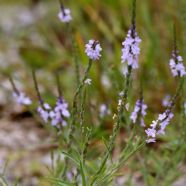





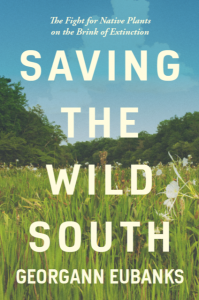
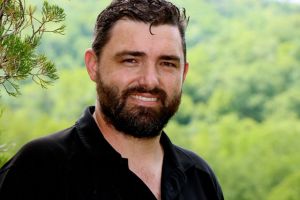
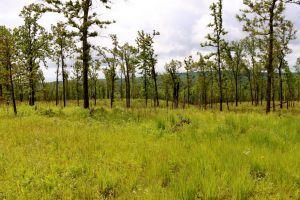
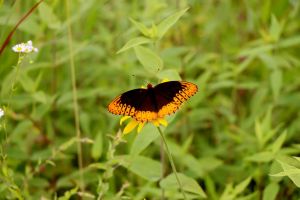
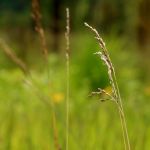
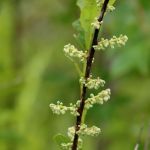
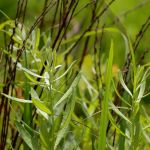
What native plants will grow on a 12 foot by 12 foot balcony that is 115 degrees in the Summer. I get no birds, butterflies or moths. It makes me so sad.